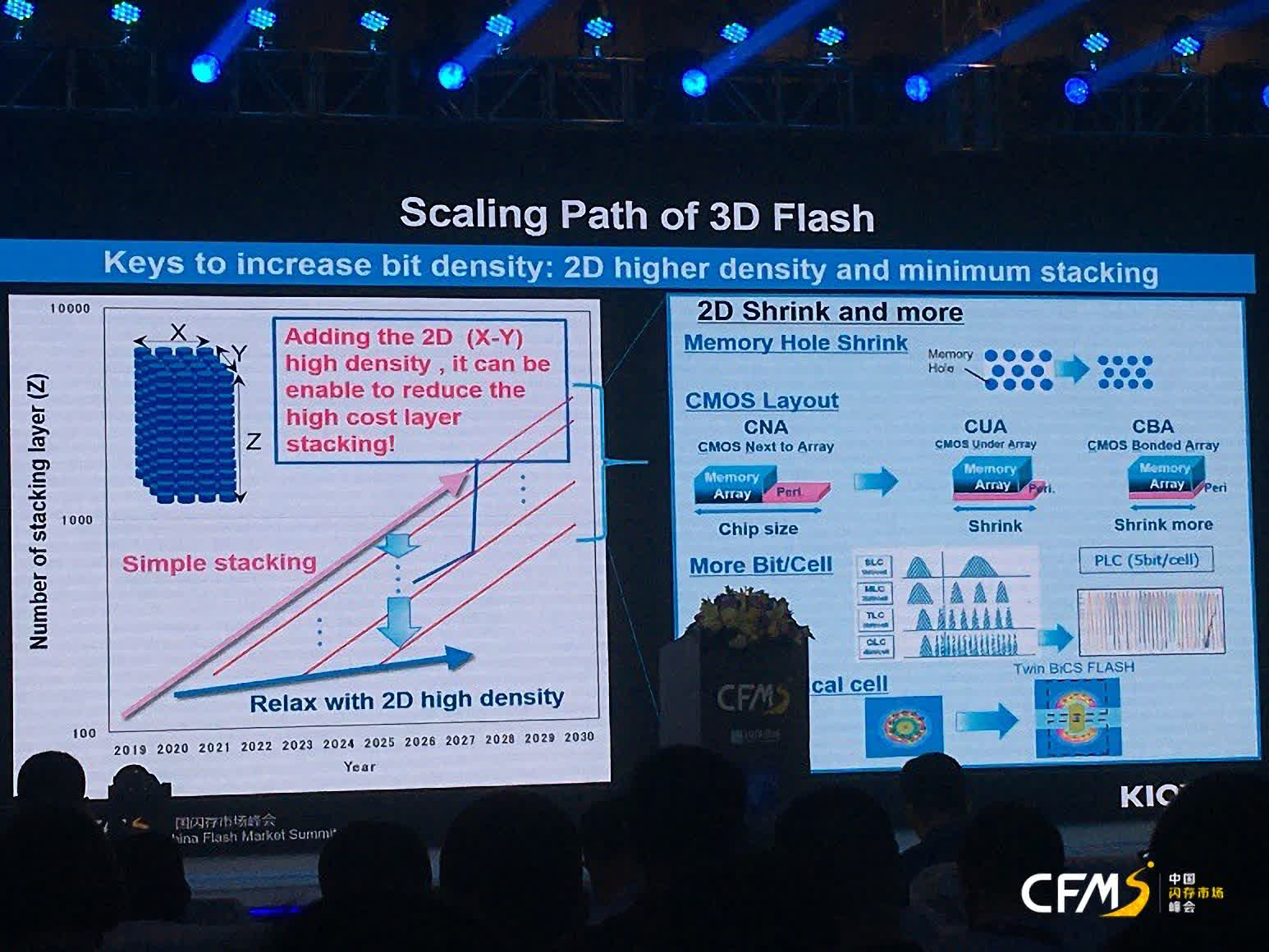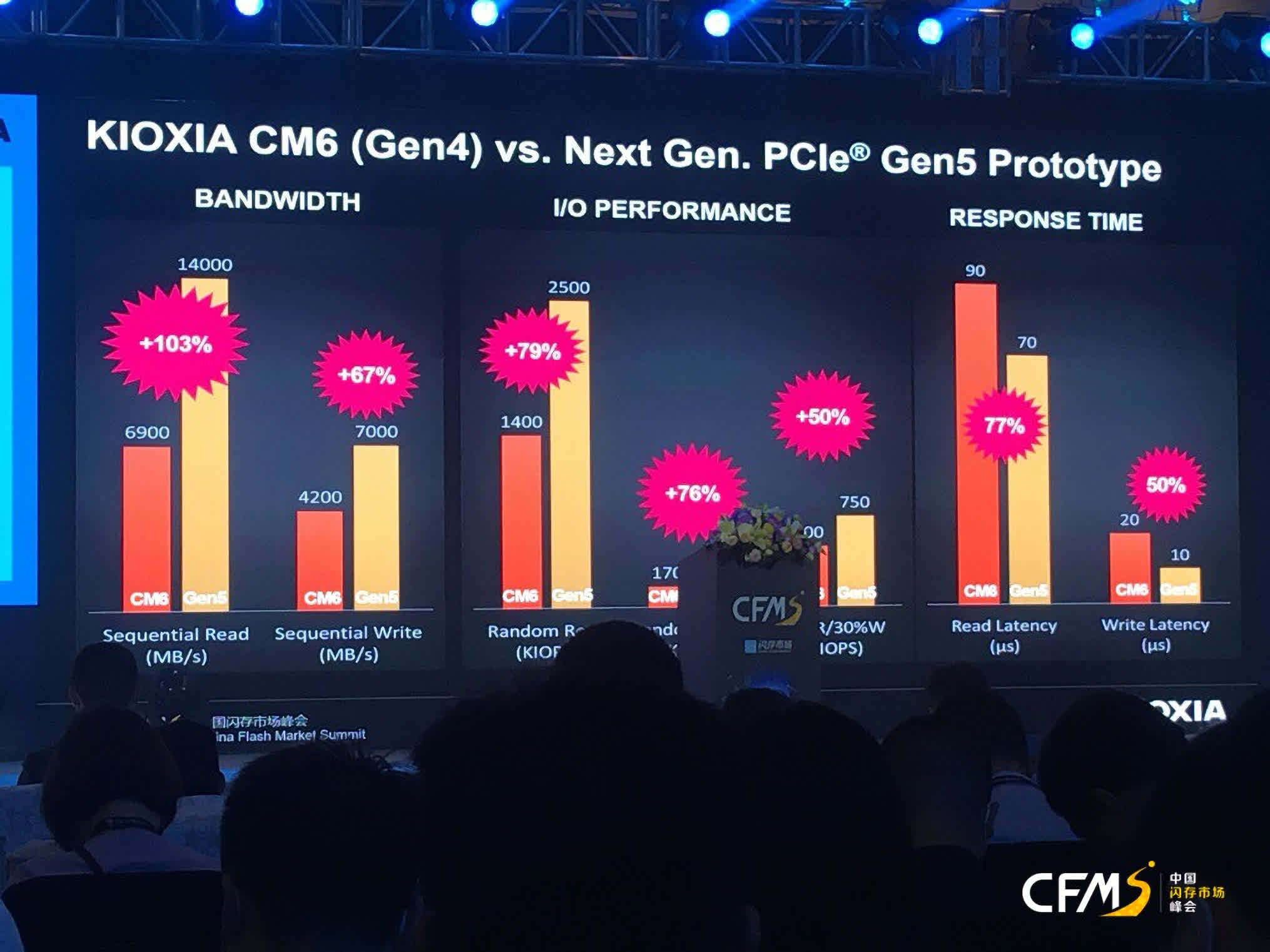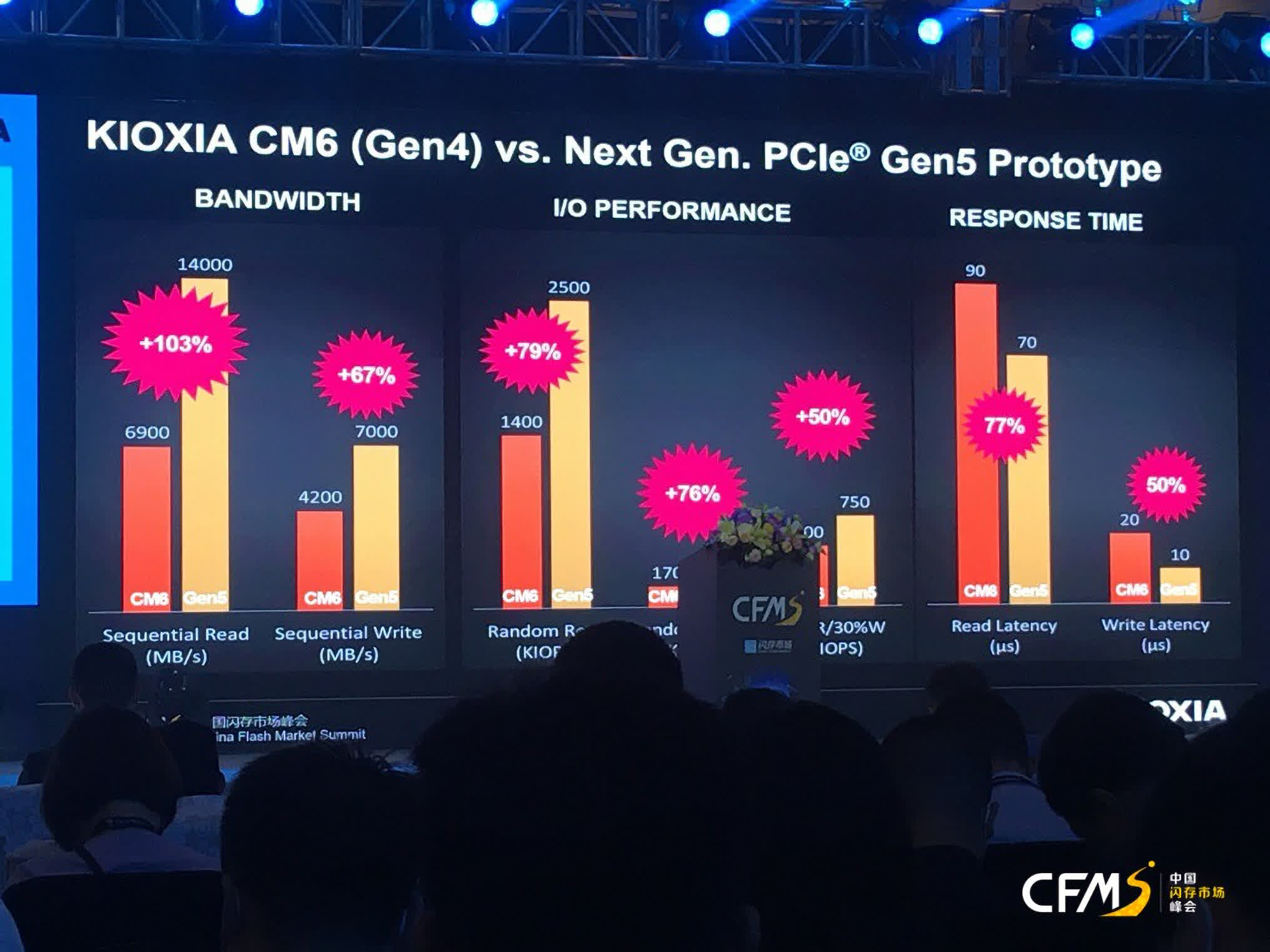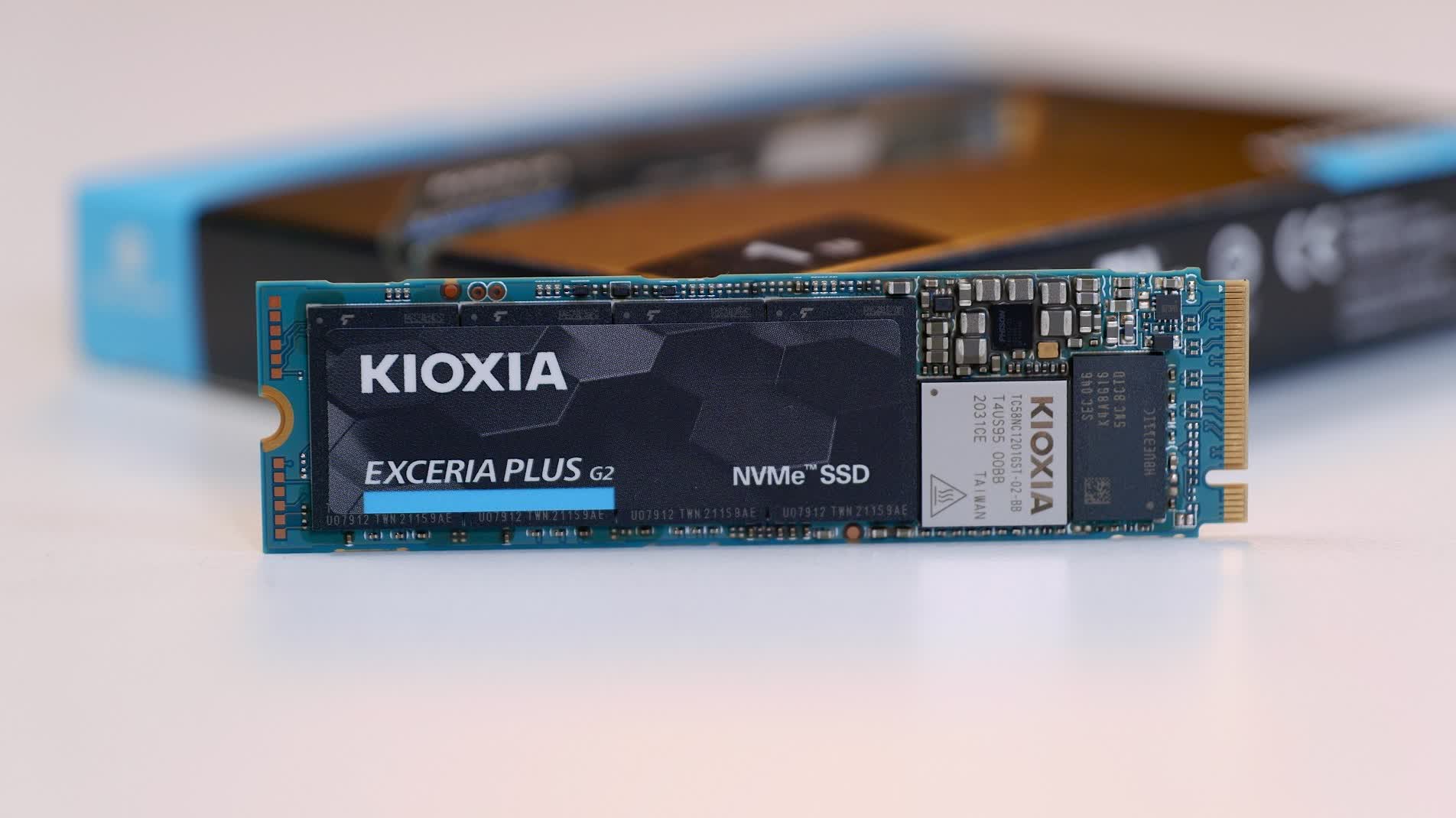Something to look forward to: In the era of super-fast and relatively inexpensive PCIe 4.0 SSDs, it's hard to imagine why you'd need a faster storage drive. However, Kioxia is making it anyway---the company is close to releasing a PCIe 5.0 SSD that can deliver speeds of up to 14,000 megabytes per second, which is no small feat.
Only a few months ago, Seagate joined the PCIe 4.0 elite SSD club of Samsung and Sabrent with speeds of over 7,000 megabytes per second. Corsair was the latest to join the party this month with the MP600 Pro, which is overcompensating with a massive heat spreader.
Last year, Kioxia promised it would be the first to take things one step further with a new generation of SSDs built for the PCIe 5.0 age. This month, the company held a presentation at the China Flash Market Summit (CFMS) 2021, where it detailed what's coming from the Japanese company's labs in the coming months.
Kioxia's most touted innovation is BiCS Flash, a 3D NAND layering technology built in collaboration with Western Digital used in both companies' solid-state storage products for the past five years. The upcoming 6th generation BiCS technology accommodates 162 layers on a 40 percent smaller die than the previous generation 112-layer BiCS. The NAND cells can be programmed up to 2.4 times faster than before, allowing for 66 percent faster write speeds on average.

The company says stacking more NAND layers is not practical, so it's currently experimenting with two things to improve flash storage density and performance. The first is to use a 5-bit per cell (PLC) configuration, but doing so adds complexity for reading and writing operations. While this does improve density, it does so at the cost of endurance and performance. The second is to pack the layers more closely together using a CMOS Under Array (CUA) structure or even a CMOS Bonded Array (CBA) one.
Moving on, Kioxia says it's managed to solve most of the problems in adopting the PCIe 5.0 interface, from signal integrity to developing a 16-channel SSD controller that will debut in the upcoming 5th generation CM6 and CD7 SSDs. These will be available for sampling to enterprise clients sometime later this year and ship in volume next year. They'll be available in capacities between 1.6 and 30 terabytes, with endurance ratings between one to three drive writes per day (DWPD).

However, the most exciting aspect of these new drives is the performance. Kioxia says its 5th generation prototype SSDs are capable of up to 14,000 megabytes per second for sequential reads and up to 7,000 megabytes per second for sequential writes. A new controller leverages the 32 Gbps per lane that PCIe 5.0 offers over an x4 interface.
Compared to Kioxia's fourth-generation PCIe 4.0 CM6 SSD, the sequential read speed has doubled while the sequential write speed has seen a 67 percent uplift. The prototype drive appears to also excel at random performance, with 2,5 million IOPS in random reads, 290,000 IOPS in random writes, and 750,000 IOPS in a mixed scenario with 70 percent reads and 30 percent writes. These, too, are vast improvements over the previous generation CM6 SSD.

To be clear, Kioxia doesn't think PCIe 5.0 drives will replace PCIe 4.0 drives anytime soon. Instead, they will coexist with the older technology both in the data center and consumer devices for years to come.
As of writing, PCIe 4.0 drives are faster than most people need them to be. Still, with software technologies like DirectStorage on the way, it's easy to imagine we'll be craving for more as developers start implementing it into their games.
